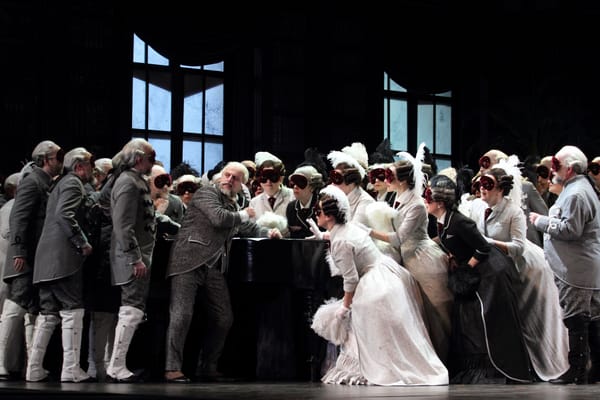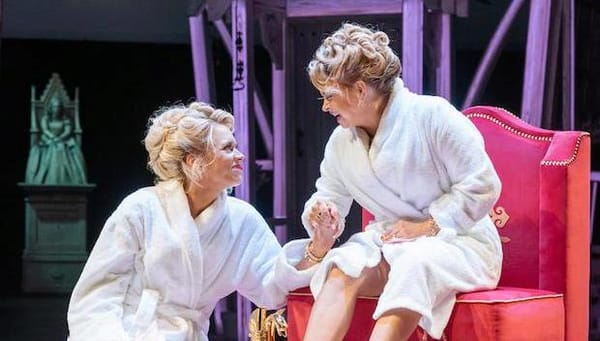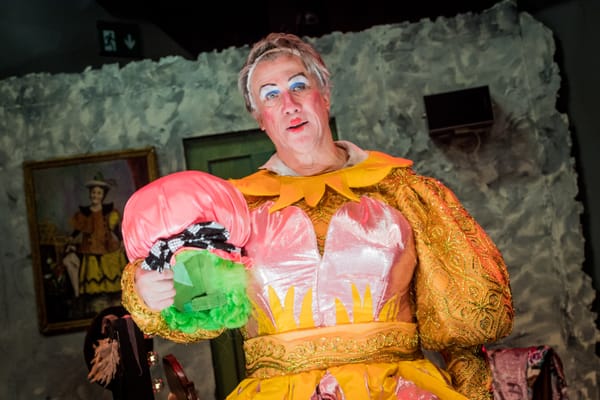Manon: A triumph of expressiveness in ballet
Alina Cojocaru and cast deliver an outstanding performance of Kenneth Macmillan’s breathtaking ballet

What a brilliant night. Being quite a novice to the ballet world, English National Ballet’s production of Manon was my first introduction to two of its stars – the choreographer Sir Kenneth Macmillan and the ballerina Alina Cojocaru. It was ballet like I’d never seen it before, and it was breathtaking.
Often a problem with ballet is that it’s actually a rather bad way to tell a story – you need to know the plot beforehand or you’ll often end up horribly confused. The dancing often exists more to show off the dancers’ abilities than to move the story along, and expressiveness is limited. The ENB’s recent staging of the classic Swan Lake, based on Petipa/Ivanov’s choreography from 1895, is an excellent example. Sublime the music and the dancers might have been, but by the time the fourth set of townspeople / courtiers came out to show off their dance to the prince, I – dare I say? – found myself slightly bored.
Not so with Kenneth Macmillan’s choreography. In Manon, choreographed in 1974, each movement has a meaning and emotion behind it. It’s realistic, almost natural – or as natural as you can get when pirouetting in skintight leotards. Theatre in ballet form. When Lescaut’s mistress (Katja Kaniukova) balances en pointe on one foot, coquettishly sliding her skirts up the other as she advances towards the wealthy Monsieur GM, I feel a thrill myself. Who knew ballet could be so sexy?
Drunken ballet – can you imagine it? Macmillan’s choreography has Manon’s brother, Lescaut, staggering stone drunk into the house of harlots. Played by Jeffrey Cirio, his gestures are wild, grand jetés all over the place, and more than once I wonder if he’ll misstep and faceplant into the floor. But it’s all a precisely choreographed illusion – Macmillan’s imaginative use of classic ballet techniques and attention to detail makes it entirely believable.
The same goes for our hero Des Grieux, the student who falls in love with Manon. There’s a fantastic scene in Act II where he sees Manon at the brothel, now the kept woman of another man. Driven to distraction by grief, he is left all alone as she leaves on Monsieur GM’s arm. There is an abundance of misery and desolation in the choreography, here executed beautifully by Joseph Caley. Such misery packed into his simple chaîné turns, arms wrapped around his chest as he spins unhappily across the floor.
But the star of the show is, beyond a doubt, Manon herself: Alina Cojocaru. She’s 37 and has a daughter, but you wouldn’t believe it to look at her. With her bird-like movements and her weightless, fairy-like dancing, she looks about 18 – every inch the young ingénue that Manon is at the beginning of the ballet. Her effortless dancing and beautiful lines make for some of the finest ballet I’ve seen. And then there’s her expressiveness. Manon is a character who undergoes multiple transformations – from innocent girl to ardent lover, and at last to fallen woman. She discovers her own sensuality, but is gradually corrupted by money and the harsh world around her. Cojocaru brings this transformation to life before our eyes, with every look and gesture bringing out the nuances of Manon’s complex character.
The most beautiful parts of the ballet are the three pas de deux danced between Manon and her lover, des Grieux. At their first meeting, with the shy innocence of young love. Then their playful, sensual duet full of unbridled joy. And finally, desperation and passion in equal measure as Manon meets her doomed end. Cojocaru and Caley make each one a masterpiece. Their interpretation and technical skill intersect such that we no longer see them as just ‘ballet dancers’, dutifully fulfilling parts on stage; they embody Manon and des Grieux, their story playing out before our eyes in dance form.
Kenneth Macmillan’s innovative choreography is the key to this breathtaking realism. Classical themes and classical styles, and yet his choreography feels so fresh and exciting. Maybe because Macmillan didn’t come from the traditional ballet background. Coming from a working-class family and starting ballet relatively late, he reportedly always felt himself an outsider in the insular world of ballet. This was despite his considerable achievements – becoming the primary choreographer for the Royal Ballet and even being knighted for his services.
He was bit of a maverick for his time, a breath of fresh air in the decorous world of ballet. Describing the ballet scene of the 1940s, he said, “Ballet looked like window-dressing. I wanted to make ballets in which an audience would become caught up with the fate of the characters I showed them.” With Manon, he certainly succeeded. No prettified window-dressing to be seen here; raw emotions and feeling take centre stage. You can’t tear your eyes away.
-5 stars









